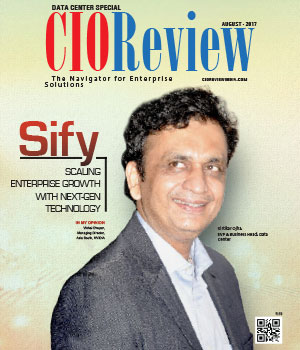
6 Key Features to Consider When Choosing a DBaaS Provider
By Ajeet Raina, Developer Relations Manager, Redis Labs | Wednesday, 24 February 2021, 06:44 IST

Choosing the correct Database-as-a-Service (DBaaS) environment is critical to the success of any cloud-based database management system (DBMS). And this is an increasingly significant decision: The global cloud database and DBaaS market is expected to grow from an estimated $12 billion in 2020 to $24.8 billion in 2025, according to a recent Research and Markets report.
What’s driving that growth? The ever-increasing demand to process queries with minimum latency.
The DBaaS model is an attractive option for rapid deployment of managed database assets in the cloud. DBaaS providers not only host all your database infrastructure and data, but also manage all of the hardware and networking infrastructure. They take care of rapid provisioning, scalability, resiliency, failover, backup, and restoration. In addition, DBaaS providers offer varying levels of promising features such as monitoring, alerts and notifications, round-the-clock support, and geo-replication for availability and backups.
But when you look at the increasingly competitive DBaaS market, along with rapid advancement in cloud database architecture, technology, and features, it becomes clear that organizations must perform a detailed analysis of the competitive offerings and select the most appropriate DBaaS for their technology stack.
Database-as-a-Service providers are not all alike. They differ significantly across a wide range of characteristics. To make the best choice for your organization, you must consider these six factors:
- True high availability and resilience
- Increased scalability and high performance
- Flexibility to choose on-premises or cloud as needed
- Modern data models
- Globally distributed NoSQL database
- Do more with less (cost optimization)
Let’s take a closer look at each of these key dimensions:
1. True high availability and resilience
Business leaders, architects, application owners, and others understand that high availability is essential for business continuity. Modern databases must always be on, and if they fail, they need to recover fast to minimize data loss. Differences between five-nines (99.999%) and three-nines (99.9%) of availability can add up quickly and degrade your ability to serve customers in a digital economy where competition is only a single click away. For developers building modern applications leveraging microservices with serverless and containers architecture, it is critical to consider the impact on application availability.
2. Increased scalability and high performance
To provide instant experiences to your customers, you can’t allow the database to be a performance bottleneck. Developers and architects know modern applications need both speed and scale, but too often scale is left out of the equation. Optimizing resource usage to increase throughput, minimizing contention, and enabling the largest possible workload to be processed are essential considerations when choosing the right DBaaS.
3. Flexibility to choose on-premises or cloud as needed
Modern applications are, by design, created in a more modular style. They can span multiple cloud providers or consume services from multiple clouds. Most of the time organizations focus their investment in a single vendor’s technology stack and hence rely on a single cloud provider. However, to increase agility and improve performance, your data layer has to span both cloud and hybrid environments. Developers and architects must adopt a multi-cloud strategy to avoid vendor lock-in and take advantage of best-of-breed solutions. They must select a flexible database that operates on all the clouds and on-premises in order to preserve operational flexibility.
4. Modern data models
Digital footprints are growing, with massive amounts of data coming from different sources, in structurally variable formats. Data is generated and arrives for processing much faster than it ever did before, and in greater volume. There’s an increased need for systems that capture, store, visualize, and analyze complex data with heterogeneous structures. Modern databases need to be able to store and process a variety of data types, in any format, and you want to be able to access and process that data using any appropriate model. For some applications you may want to view the data from a tabular (relational) perspective, but for others you may want to view relationships via graphs, you may want to do full-text search, or you may want to access data as JSON documents. All of these models, and others, should be possible. Developers and architects must select an intelligent, data agnostic, performance-focused, and scalable database that can serve data when and how it’s needed and capture exactly what’s happening at any moment in time.
5. Globally distributed NoSQL database
Most companies serve customers who are global. Modern applications must provide instant responses to users regardless of their distance. To support the responsiveness and scalability required by these applications, enterprises are increasingly looking at innovative database technologies such as geo-distributed data processing as the key enablers. Developers and architects must select the right database for highly interactive, scalable, and low-latency geo-distributed apps. They must choose a modern database that can be deployed globally yet provides local latencies for writes and reads, while simplifying resolution of conflicts and enabling strong eventual consistency for datasets.
6. Do more with less (cost optimization)
Reducing total cost of ownership (TCO) is always a top priority for businesses. An efficient use of compute resources and re-deploying capital into the right opportunities are two key parameters that influence your business growth. As your data grows, inefficient use of compute resources could result in high unwanted charges. Multi-tenant datastores are a great way to lower your cloud expenditures. A modern database with a capability to support multi-tenant shared models in order to deliver lower costs, easier integration with APIs, and hands-free maintenance are essential considerations when choosing a DBaaS.
CIO Viewpoint
India and its Data Center Advancements
By By Michael Cantor, CIO, Park Place Technologies
How AI/Machine Learning can Revamp Data Centers...
By Piyush Kumar Chowhan, CIO and Vice President, Arvind Lifestyle Brands Limited
By Sanjay Chowdhry, CIO, Hamdard WAKF Laboratories
CXO Insights
Why A Data First Approach Could Be Your...
By Geetha Ramamoorthi, Managing Director, India, KBR Inc
A Short Guide for Data-driven and...
By Kapil Makhija, VP - Technology Cloud Business, Oracle India
The burgeoning market of prompt engineering in...







